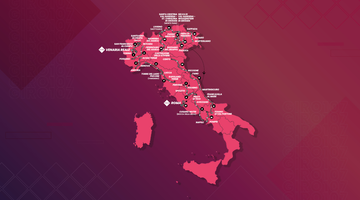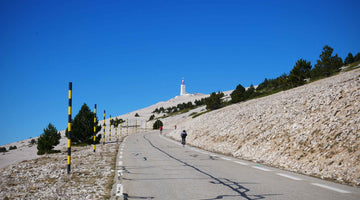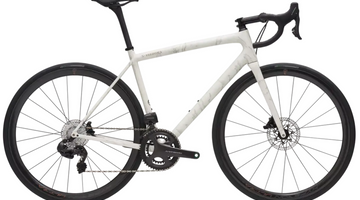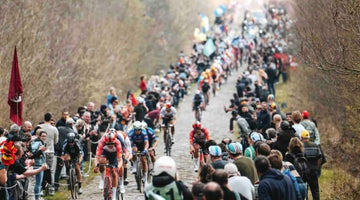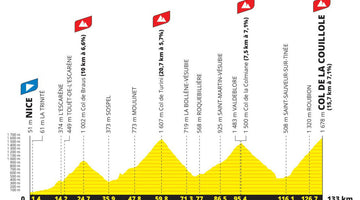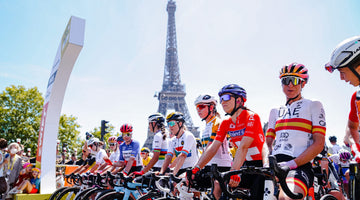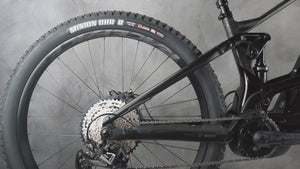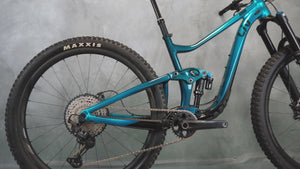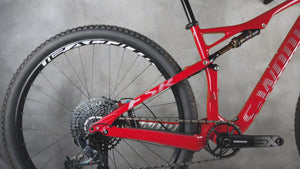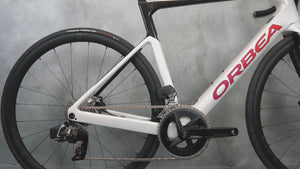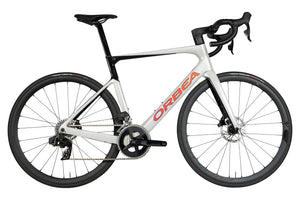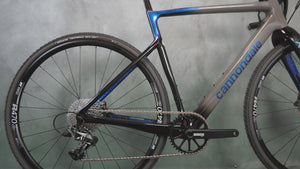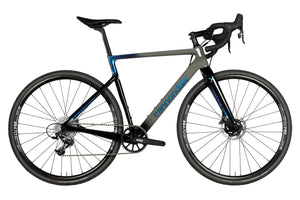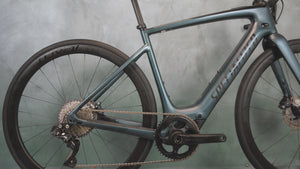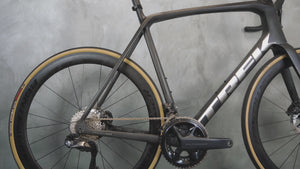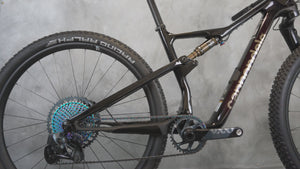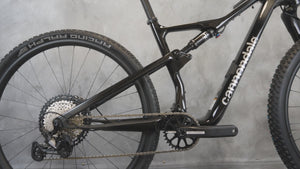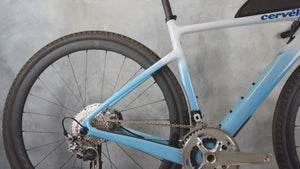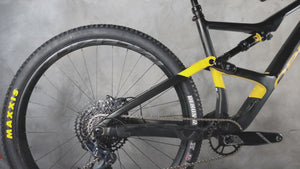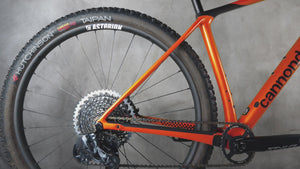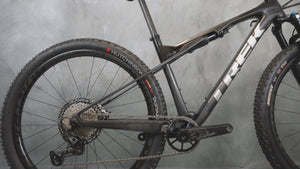The most beautiful cycling passes in Alsace
In this Article
Published on July 6th 2023
Thanks to its proximity to the Vosges mountains, Alsace boasts a wide variety of passes, both magnificent and challenging, criss-crossing the region from north to south. Yet it's often the region's unique gastronomy that attracts tourists to France's most easterly region. But Alsace is a truly mountainous region, and deserves to be recognized as such when it comes to cycling. If you're a cycling enthusiast and you're keen to explore Alsace's roads and cycle paths, we've selected the 10 most beautiful mountain passes for you to discover, combining a positive difference in altitude with ... local gastronomy to help you recover - or not!

Must-see passes in Alsace
The hardest : Le Grand Ballon
This is undoubtedly the region's most legendary pass. The highest point in the Vosges at 1424m, this pass is one of the gateways to the famous Route des Crêtes (ridge road). If you're lucky, the view from the summit will give you a glimpse of the Alps, but more than that, cycling along the Route des Crêtes is almost a necessity once you reach the top. Considered by some to be Alpe d'Huez of the Vosges, it's possible to climb the Grand Ballon from many different segments (Cernay, Soultz, Geishouse from Moosch or Saint Amarin) but it's via Willer-sur-Thur that we suggest this ascent: fewer cars than via Cernay and shaded on the first part, the end of the climb offers a verdant panorama and the radar control center as a final focal point.
Le Grand Ballon via Willer-sur-Thur: 16 km at an average gradient of 6.1% for 974m of ascent.

The Tour de France's most popular route : Ballon d'Alsace
Included for the 28th time in the Tour de France route, on the last stage of the 2023 edition, this is without doubt the most popular mountain pass of the Grand Tour. Julian Alaphilippe even crossed it in yellow in 2019! As its name suggests, the Ballon has a rounded summit, making the ascent more rolling and uncluttered on its final stretch. On the border of three départements, you can climb it via Saint-Maurice-sur-Moselle (Vosges), or via Lepuix (Territoire de Belfort). But as you've already guessed, we'll be going for the climb on the Alsatian side (Sewen). for its panoramic views.
Le Ballon d'Alsace via Sewen: 13.2 km at an average gradient of 5.1% for 678m of ascent.
The most beautiful : Col du Wettstein via Collet du Linge
A historical landmark that can be climbed from either Orbey or Munster, we recommend you the latter, allowing you to enjoy breathtaking views of the Hautes Vosges and the tranquility of the surrounding pastures. With no major difficulties, this pass gives you the chance to enjoy every kilometer, between lush green pastures and unobstructed views, without being bothered by cars (if you go via Hohrod, unlike the ascent via Soultzeren). Just 2.5km from the summit, you'll find the Linge memorial, a battlefield tour that takes you back to the sad days of the Trench War. The Wettstein national necropolis, dedicated to the memory of French soldiers who fell in the First World War, marks the end of the pass.
Notable passes in Bas-Rhin
Mont Saint Odile
Strasbourg resident? This is the benchmark pass for all cyclists and triathletes in the European capital. Less than forty kilometers away, it's the most accessible climb by bike from the city center. Three sides (Barr, Klingenthal, Saint-Nabor) allow you to reach the Mont Saint Odile Abbey, which overlooks the Vosges foothills and gives you a glimpse of Strasbourg cathedral. Take the time to push your bike into the courtyard, and admire the pink Vosges sandstone building as you go! For up-hill riders fond of steep, uneven climbs, we recommend the ascent from Saint-Nabor past the Domaine du Saint Jacques and the road to Compostela, but if you want to start or resume your training, take the route via Klingenthal; the even gradient and perfect surface will satisfy all fans of watts and aero bikes!
Mont Saint Odile via Saint Nabor: 8.3 km at an average gradient of 6.2% for 515m of ascent.

Champ du Feu
One of the longest climbs in the Bas-Rhin, with 15 to 20 km depending on the segment, culminating at an altitude of 1099 m, the ascent to the Champ du Feu offers a fine sporting challenge for those who love positive altitude changes (910m). You'll come across a lot of Strasbourg cyclists doing their splits here, thanks to the fairly even gradient. At the summit, the famous Champ du Feu tower overlooks a grassy expanse ideal for hiking, but also, and above all, the ski slopes, at the foot of which we suggest you stop for a bite to eat in one of the resort's inns below. Less busy, with slightly narrower roads and bucolic scenery, segments via Rothau (via the Struthof concentration camp) or Fouday (via Belmont and La Serva; summer/winter ski resort) are tempting options.Le Champ du Feu via Fouday: 10.7 km at an average gradient of 6.6% for 702m of ascent.
The Grand Wintersberg
In the intimacy of the Vosges du Nord and starting from the spa town of Niederbronn-les-Bains, this short out-and-back climb ends at the foot of the panoramic tower. Take the time to climb the few steps to admire the view of the Vosges du Nord Regional Nature Park, the Black Forest and, if you're lucky, even Strasbourg Cathedral. Although the surface makes for a relatively comfortable ascent on a road bike, the gravel enthusiasts can extend their adventure on the trails offered by this forest spot.
Haut-Koenigsbourg
Halfway along the famous Alsace Wine Road, the ascent to Haut-Koenigsbourg is shaded: ideal for escaping sweltering summer days. Although there are four possible sides to the climb, it's via Kintzheim, a key stopping point on the Wine Road, that we recommend the climb. The icing on the cake is that this climb allows you to reconcile cycling and family life! Set off by bike for the climb and join your loved ones at the summit for a visit to the medieval Château du Haut Koenigsbourg or for a playful moment at the Montagne de Singes. In the very south of the Bas-Rhin region, this pass offers breathtaking views over the Alsace Plain and the Black Forest. (Germany) as well as the Parc Naturel Régional des Ballons des Vosges, where cycling is well worth the effort. Here are our ideas for some of the Haut-Rhinois climbs.
Haut-Koenigsbourg via Kintzheim: 8.1 km at an average gradient of 6.2% for 499m of ascent.
Mountain passes not to be missed in Haut-Rhin
Petit Ballon
Perhaps less well known than its big brother the Grand Ballon, this pass is well worth the detour. Shaded in summer for the first part, the climb ends with a few slightly steeper switchbacks, but the panoramic views are well worth the effort. First on the mountainside, then on a small plateau at the summit, you'll see the ski resorts and villages of the Vosges. But be careful on the descent, whatever side you're on: narrow roads and a few hairpin bends require vigilance and good brakes. On this subject, we have a preference for disc brakes when the gradient increases, but with pads in good condition, you'll be fine.
Le Petit Ballon via Munster: 11.6 km at an average gradient of 6.6% for 773m of ascent.

Col de Bramont then Route des Américains
After a refreshing break at Lac de Kruth, continue your cycling tour over this rather rolling pass. But more than that, and this is perhaps where our proposal gets a little tricky: after the Col de Bramont switchback, turn right onto the Route des Américains. The gateway to the Thur valley, this steep climb will take you up to the Route des Crêtes and its farm inns, renowned for their "good food" marcaire meals.
Col du Calvaire
This ascent takes you to the famous Lac Blanc resort, on an impeccable surface that your bike will appreciate. Starting from Orbey, the scenery is varied: pastures, forest, cliffs at the foot of which Lac Blanc nestles, and finally a more open panorama as you approach the resort. The little extras on this pass: the possibility of lengthening the route in the peace and quiet of the meadows via Basses Huttes, the detour via Lac Noir or the super pastry shop halfway up "à Pairis".
Col du Calvaire via Orbey: 6.5 km at an average gradient of 5.8%, 375 m ascent.
HOW TO BEST PREPARE FOR THE CLIMB
- Train regularly for uphill climbs. The position, the pedaling cycle and the muscles involved are different when you're riding flat or uphill. This is why it's important to regularly take on bumps and climbs, to get your body used to this different type of effort. Whether it's a small hill to be repeated several times or a series of bumps on a hilly course, every opportunity is good to work specifically on this particular effort.
- Adapt your equipment. When it comes to mountain climbs, the choice of gear ratio is an important factor in performance if you want to reach the summit in the best possible conditions. We advise you to adapt your cassette to the percentage of slope you're likely to encounter. For example, a cassette of 11-32 or 11-34 will give you more velocity and allow you to turn your legs more, thus avoiding having to "force on the pedals" when the road rises steeply. Opt for a lighter carbon frame and/or a mountain bike, which are better suited to mountain passes than aero bikes.
- Manage your nutrition. Whatever your level, climbing a mountain pass is always a sporting challenge that demands a lot of energy from your body. You'll need to take care of your caloric and hydric requirements to enable it to function normally and avoid the traditional "craving" at the end of the outing. We advise you to take along an isotonic drink and a cereal bar, to be consumed gradually throughout the climb. For those with a sweet tooth, a slice of blueberry tart or "käseküeche" (our local cheese cake) is a must that you can find in all "ferme-auberges" at the top of the mountain passes!

- Building and choosing the right itinerary. For cycling to remain a pleasure, the choice of route is essential. Knowing your resources, both physical and psychological, is crucial when it comes to selecting the routes you want to take. Finding the right balance between physical exertion, sporting challenge and sightseeing is not always easy, especially when the region has yet to be explored. To help you do this, we've listed below the essential information you need to bear in mind when planning your itinerary and quantifying the effort required for your forthcoming outing.
Whether you want to visit the region, take on a sporting challenge or simply spend some time in the fresh air, Alsace has many passes to suit every cyclist's aspirations. More accessible than the Alps or the Pyrenees, the Vosges allows you to move easily from one valley to another, from one landscape to another, thanks to its many well-maintained and challenging passes.
What's more, if you find that a series of passes sometimes seems too long, and you're looking for a gentler gradient, we've got just what you're looking for! The passes on offer, particularly in the Haut-Rhin region, often end on the Route des Crêtes, or we can also advise you to follow the Vosges via the famous Route des Vins d'Alsace, offering a hilly route through the vineyards and passing through some of France's most beautiful villages.















